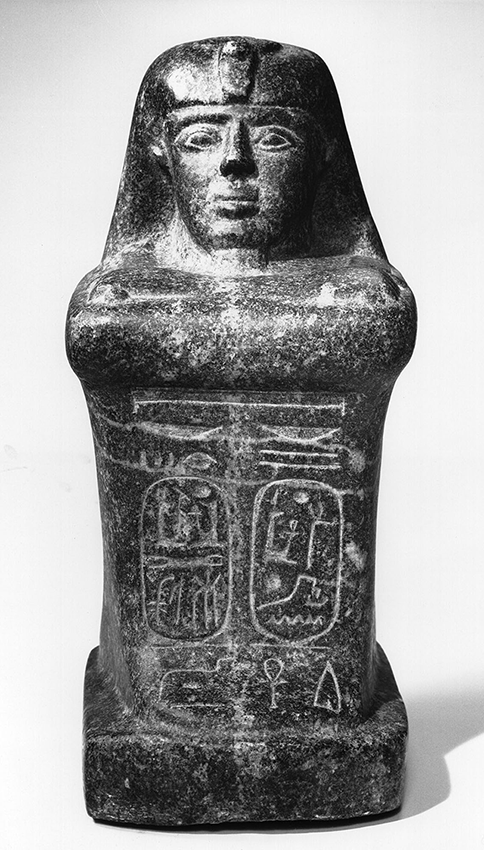Cantor Arts Center
328 Lomita Drive at Museum Way
Stanford, CA 94305-5060
Phone: 650-723-4177

Artist unknown (Egypt), Block Statue with Cartouches of Ramses II, ancient with ancient modifications, c. 712–332 BCE, or 19th-century fake. Granodiorite. Stanford Family Collections, 1966.371
In 1882 the Scottish archaeologist Alexander Henry Rhind (1833–1863) observed how faux statues were being fashioned in Egypt: “The [statue] is fractured to give it a truer look, and the hieroglyphic inscription is copied (but rudely) from a genuine original. The most popular and largely-sold forgery. . . bear[s] the name of Ramses the Great upon it.”
This block statue may be one such fake, or it might be a genuine antiquity that was re-carved with a royal appearance to increase its value to collectors such as Jane Stanford. The headdress bears the cartouche of Ramses II and the royal serpent emblem despite the fact that this type of seated figure almost always memorialized non-royal elites. Indeed, the closest parallels to this statue depict non-royals from the fourth century BCE, for instance those of Neskhemenyu and Pameniuwedja at the Metropolitan Museum of Art, New York (see below).
Jane Stanford’s statue also differs from typical depictions of royalty due to its tiny, almost nonexistent ears. In the Egyptian religious imagination, it was critical for royal statues to have sizable ears so that the prayers of petitioners could be heard and answered. Was the statue refashioned anciently? Did a modern forger give an ancient statue a royal appearance to increase its value? Or is the entire creation a modern hoax?